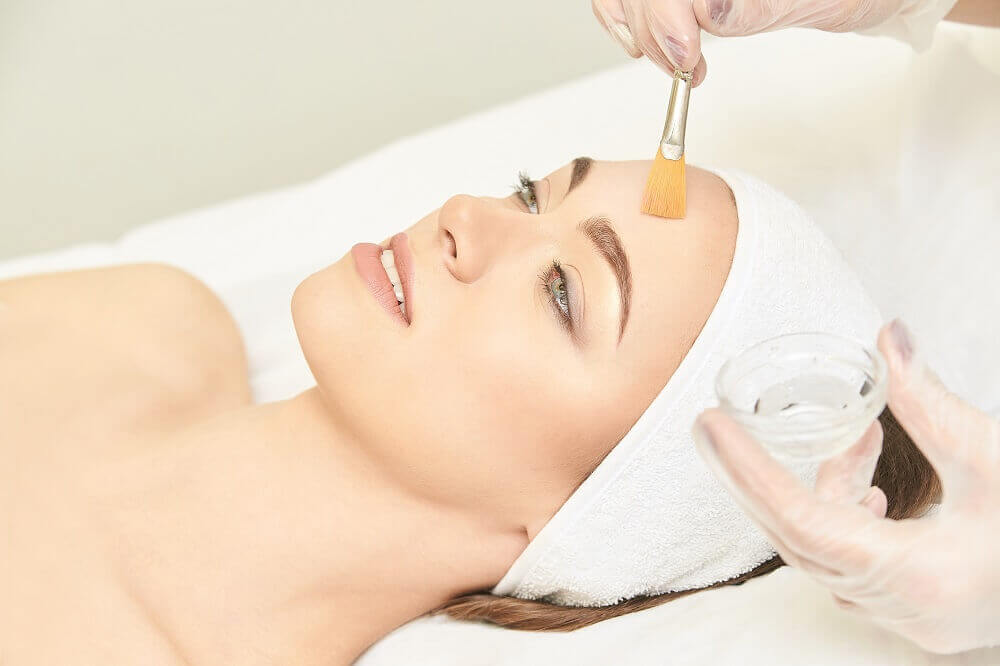Micropeel Treatments from U.S. Dermatology Partners
What Is a Micropeel Treatment?
Creating Healthy, Revitalized Skin
Over the years, dermatologists have worked to create personalized cosmetic dermatology plans, and in many cases, that included combining common treatments. One of the most often recommended combinations was for patients to combine microdermabrasion and chemical peels to receive the optimal results from both procedures. In time, this combination of treatments has become its own unique cosmetic dermatology service called a micropeel. To learn more about micropeel treatment from U.S. Dermatology Partners, keep reading the page below or complete our simple online request form to schedule a consultation with one of our knowledgeable cosmetic dermatologists.
Find This Service Near You
What Is a Micropeel?
A micropeel is a conservative, non-surgical cosmetic dermatology treatment that combines the benefits of chemical peels and microdermabrasion. The combination of these two treatments is a great way to refresh the skin’s overall appearance and health, and it can be used to specifically address imperfections and skin health concerns like wrinkles, scars, fine lines, and acne. This non-invasive treatment is a safe and effective way to promote skin cell turnover and reveal new, brighter, firmer, more youthful-looking skin.
Who Is a Good Candidate for Micropeel Treatment?
Because a micropeel is non-invasive, it’s considered safe for almost any patient of any skin type who wants to remove dead skin cells, jumpstart collagen production, and reveal the healthier layer of skin below the dull, outer layers of their skin.
Specifically, a micropeel may be recommended by dermatologists for patients who are struggling with:
- Uneven skin tone or texture
- Dull-looking skin
- Fine lines, wrinkles, or minor skin laxity
- Hyperpigmentation (dark spots, melasma)
- Age spots
- Excessive dead skin cell buildup
- Acne
- Minor scarring
- Enlarged pores
- Sun-damaged skin
- Sensitive skin, causing irritation and inflammation
- Aging skin that doesn’t look or feel its best
While most patients can safely receive micropeel treatment, it isn’t recommended for those patients who have very severe acne or an active acne breakout, those with rosacea, or for pregnant women.
How Does Micropeel Treatment Work?
The micropeel process begins with a dermatologic consultation visit. During this initial appointment, your dermatologist will examine your skin, discuss your treatment goals, and help you determine whether or not a micropeel is the best option to achieve those goals. If a micropeel is the right option, your dermatologist will create a customized treatment plan to help you reach your desired result. In most cases, this involves a course of four to six monthly micropeel treatment sessions. Performing both procedures in the same micropeel treatment session is usually safe and effective, but for individuals who have sensitive skin, it may be beneficial to receive individual treatments every two weeks rather than both treatments once a month.
The procedure itself blends a superficial chemical peel with microdermabrasion treatment. During the chemical peel portion of your micropeel treatment session, a dermatologist applies a chemical irritant to the skin, which is chemically exfoliated. These chemical peels are typically made with ingredients like salicylic acid, glycolic acid, and alpha or beta hydroxy acids. The specific formulation of chemical peel solutions will be chosen based on your individual skin care needs. The chemical peel works by penetrating the skin’s outermost layer to destroy damaged and dead skin cells, revealing the healthier new layer of skin below.
The microdermabrasion treatment uses a vacuum device to apply a mist of fine crystals to the skin. The combination of pressure and abrasion from the crystals exfoliates and buffs the skin, creating an improved overall appearance as well as improving circulation and lymph flow, and reducing inflammation, which generally evens skin’s texture and tone for a revitalized appearance.
The process of administering both the chemical peel and microdermabrasion treatment takes about an hour. It is considered a relatively comfortable treatment, but some patients do report experiencing itching or mild burning and heat during their micropeel procedure. After the micropeel treatment, your dermatologist will apply moisturizer to protect and hydrate your healing skin before you leave the office.
Are There Side Effects to Micropeel Treatment?
Micropeel treatments are considered a no-downtime dermatology solution. Many people do not report experiencing any pain or side effects following the procedure. If you do notice side effects after your micropeel sessions, they will likely be mild and may include irritation, itching, skin that looks rosy or red in tone, and some light peeling. The few symptoms associated with micropeel treatments usually only last a few days. The response does vary based on the individual, but for the most part, the recovery process is quick and comfortable.
To ensure a faster healing time, you should follow these instructions:
- Moisturize treated skin at least twice a day (morning and evening)
- Minimize sun exposure or keep skin covered, if at all possible, for the first week
- Apply sunscreen whenever your treated skin will be exposed to sunlight
- Avoid chlorinated water (pools, hot tubs) for the first few days
- Forego using skincare products that contain glycolic acids or Retin-A for the first week (ask your dermatologist for specific skincare product recommendations)
- Do not wax the treated area for the first week
- Stay hydrated
- Get plenty of rest
- You may use cosmetics, but apply them over a moisturizer and take care to remove them gently
- Follow any other aftercare instructions provided by your dermatologist
While serious adverse responses to micropeel treatments are extremely rare, they can happen. If you notice that side effects of treatment last longer than a week, worsen over time, or you’re in significant discomfort, get in touch with your dermatologist to determine what the next steps should be.
How Long Will Micropeel Treatment Last?
The results of the micropeel treatment will last different lengths of time, depending on the individual and the skin concern they’re addressing. If you’re receiving micropeel treatments to minimize the appearance of scarring, one series of treatments may be all you ever need. However, if you’re looking to achieve and maintain generally improved skin appearance for aging skin, chronic skin conditions, or other concerns, your dermatologist will likely recommend periodic retreatment. In most cases, that means receiving the micropeel treatment series once or twice a year.
*Results may vary by individual





